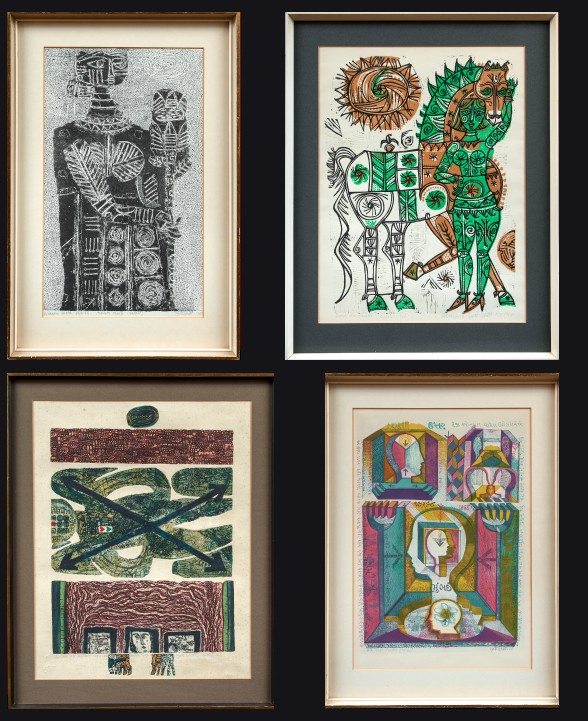Jyoti Bhatt (b. 1937) has worked in a variety of mediums; it is his printmaking that has garnered him the most attention. In 1966 Bhatt returned to M.S.U. Baroda with a thorough knowledge of the intaglio process that he had gained at the Pratt Institute in New York. Bhatt's enthusiasm for intaglio caused other artists such as Jeram Patel, Bhupen Khakhar and Gulam Mohammed Sheikh in Baroda to take up printmaking which led to the establishment of "The Baroda School" of Indian art.
Late in the 1960s, Bhatt was asked to take photographs of Gujarati folk art, which soon became one of the artist's passions to document traditional Indian craft and design work. Bhatt's investigations into village and tribal designs influenced the motifs he used in his printmaking. Bhatt’s etchings, intaglios, and screen prints have explored and re-explored a personal language of symbols that stem from Indian culture: the peacock, the parrot, the lotus, stylized Indian gods and goddesses, and unending variations on tribal and village designs.
His work is in numerous international collections, including the Museum of Modern Art,New York, The Smithsonian Institution, Washington D.C., The British Museum, London, and the Museum of Art & Photography, Bangalore.
1962
Intaglio print, 20” x 12 ½”
Jyothi Bhatt – Dona Con Covallo (Napoli)
1962/64
Intaglio and relief print, 20 ½” x 22 ½”
Jyothi Bhatt – Double Self-Portrait
1965
Intaglio print, 26 ¾” x 22 ¾”
Jyothi Bhatt – Lost Pundit No. 2
1968
Lithograph, 20” x 14 ¼”
